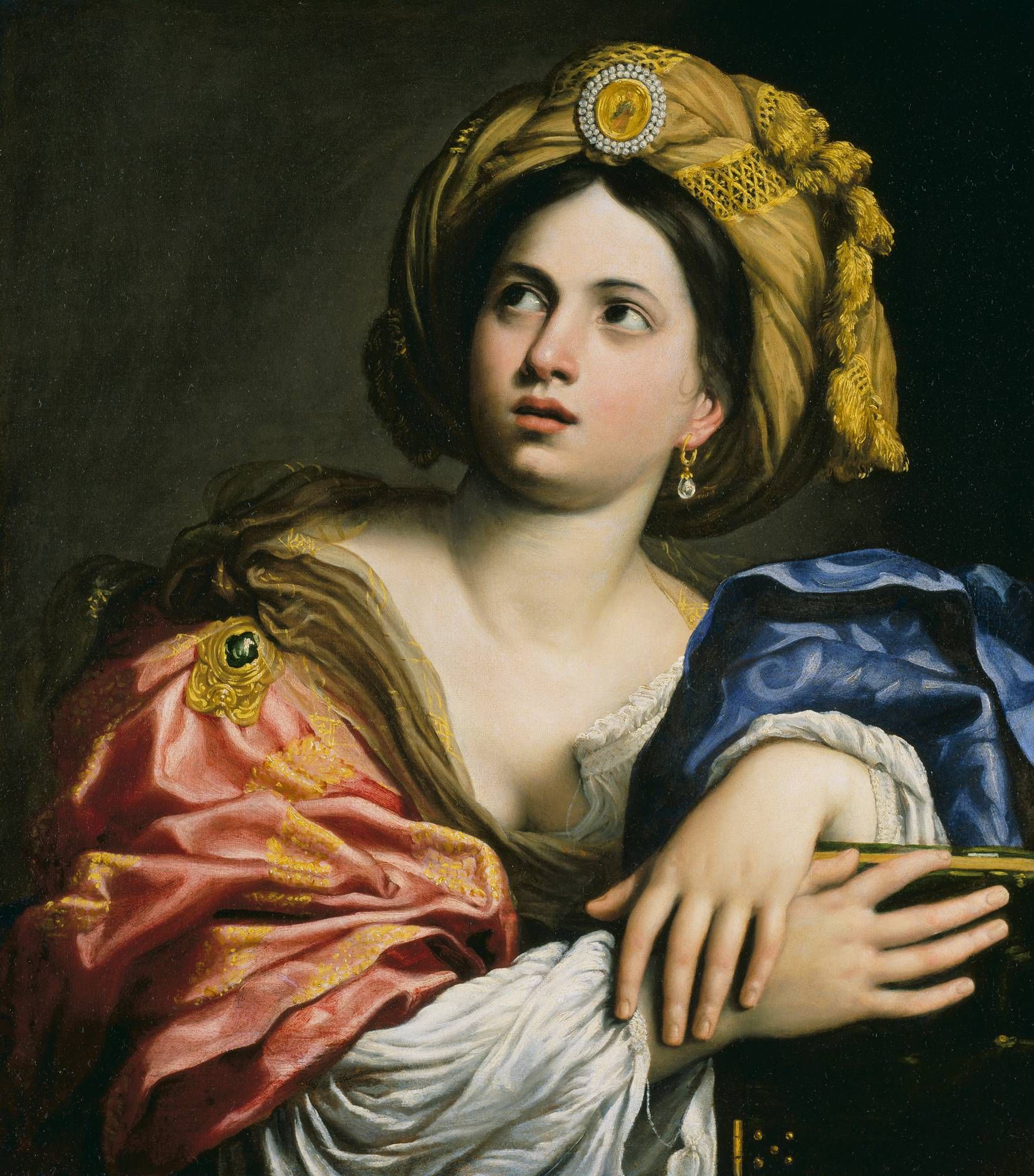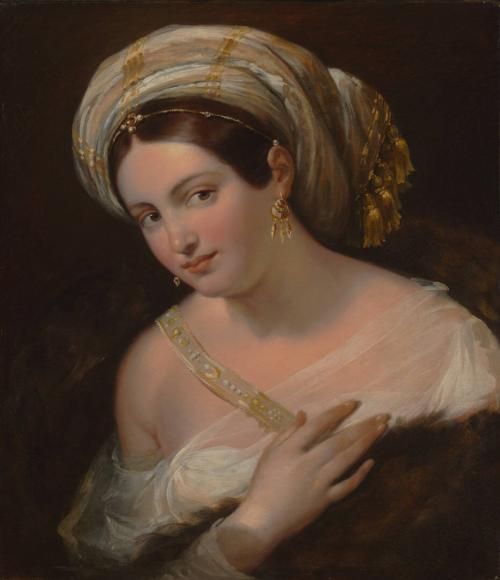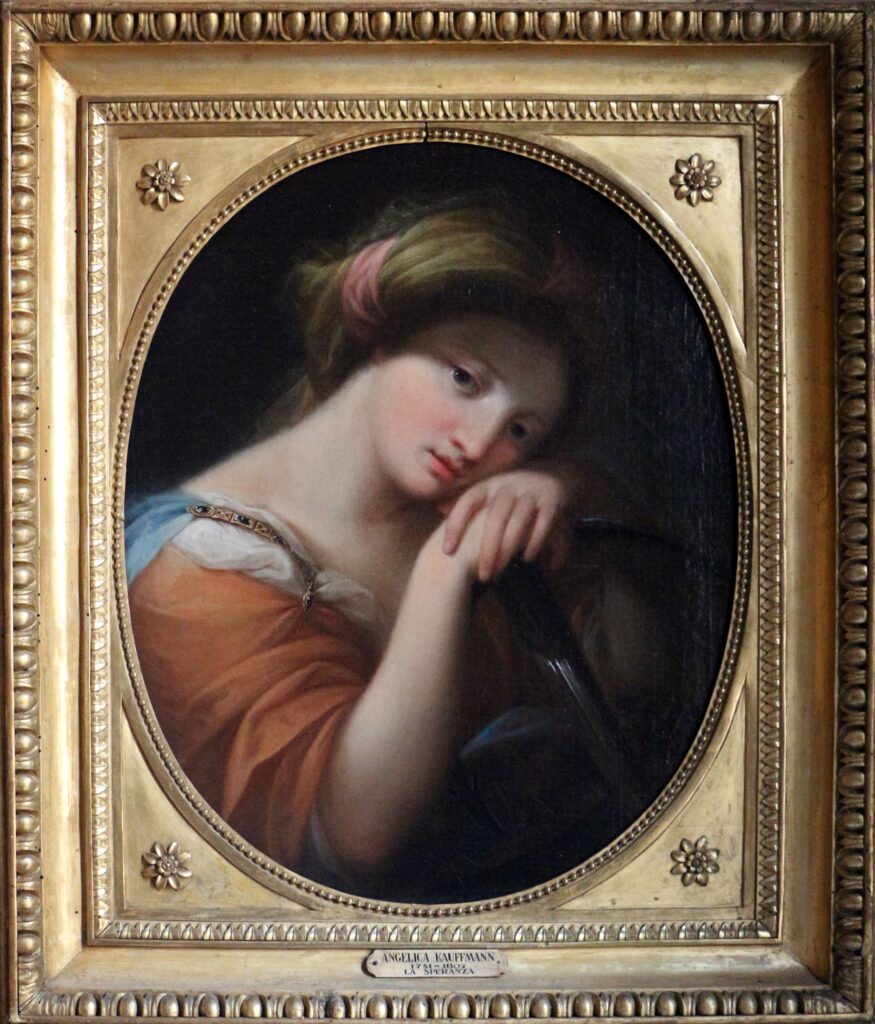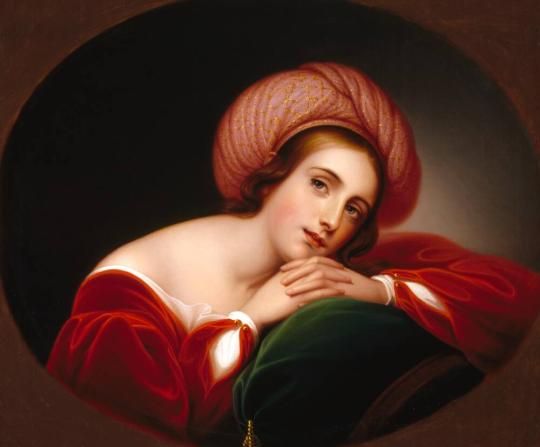Harriet Christina Cany Peale (1800–69)
Idealized Portrait of a Woman (Female in a Turban), c. 1840–60
Oil on canvas
McMullen Museum of Art, Boston College, Gift of Betsy Cahill in memory of Dr. Andrew T. Cahill, 1993.3
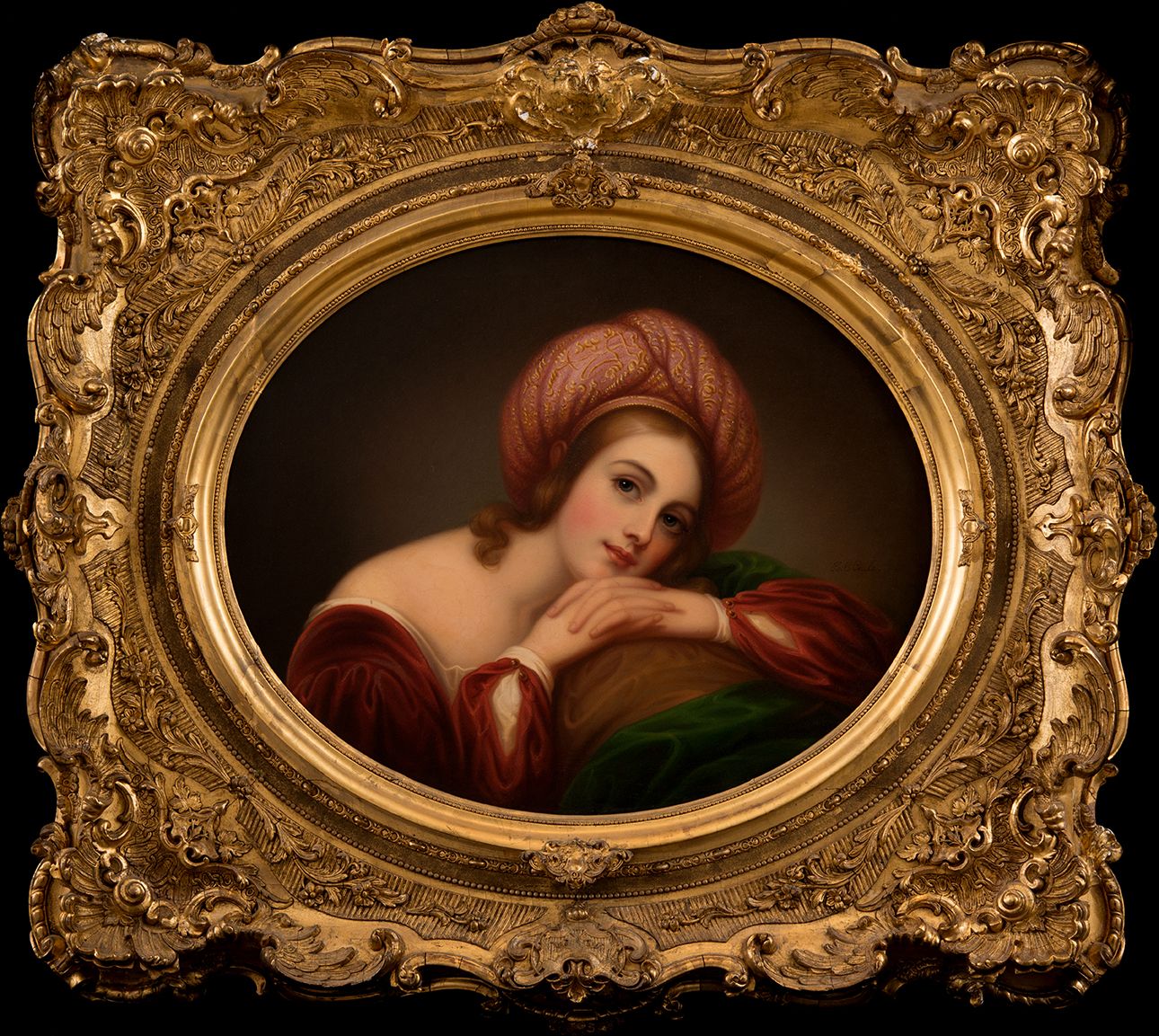
Nancy Netzer
Inaugural Robert L. and Judith T. Winston Director, McMullen Museum and Professor, Art History

In 1840 Harriet Cany, a widow, became the second wife of her teacher, Rembrandt Peale (1778–1860), a member of the celebrated Philadelphia family of painters. Both she and her husband, with whom she shared a studio, painted landscapes and portraits, including several replicas of Rembrandt Peale’s celebrated “porthole” style portrait of George Washington on which the couple collaborated. As a result, Cany Peale was categorized primarily as a copyist and several of her paintings were misattributed to her husband. Known as a painter of portraits and still-life, Cany Peale more recently has been recognized as a distinguished landscape painter of the Hudson River school.
Rembrandt Peale made copies of many Baroque and eighteenth-century paintings during his travels to Italy in 1829–30. Among them were Domenichino’s Old Testament sibyls (see image), which at the time were popular with American collectors. He adapted the sibyl type for many of his portraits and what were termed “fancy pieces,” pleasing decorative images from the artist’s imagination like Woman with a Turban (see photo). Peale would have seen Angelika Kauffmann’s La speranza (Hope) in Rome (see image) at the Accademia di San Luca and likely copied it. That copy may well have inspired his elegantly dressed, turbaned Idealized Portrait (Museum of Fine Arts, Houston) probably using his wife as model with her head resting on clasped hands, shoulder exposed and engaging the viewer (see photo). Cany Peale, in turn, made at least two nearly identical signed copies of her husband’s Idealized Portrait, this one in the McMullen and another in the Chrysler Museum in Norfolk, Virginia.
